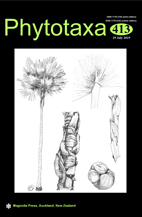Abstract
Twenty-six species from various sections of the genus Pluteus have been recorded from Turkey until now. In this study, phylogenetic analyses inferred from the nuclear ribosomal internal transcribed spacer (nrITS) were conducted for species delimitation and for comparisons with closely related taxa of Pluteus sect. Hispidoderma in Turkey. Our results show that P. granularis is recorded in Turkey and Europe for the first time, P. granulatus in Turkey for the first time and in Europe for the third time, P. umbrosoides in Turkey for the first time and in the world for the second time, and P. variabilicolor in Turkey for the first time. Also in this study, sequencing data for P. leoninus, P. plautus, P. roseipes, P. semibulbosus and P. umbrosus as well as the above-mentioned new records are presented for the first time from Turkey as a different geographical area. Analyses of the ITS showed that the lowest sequence divergence among in-group taxa was observed between P. semibulbosus and P. aff. semibulbosus 0.010% (SE = 0.004), the next was between P. chrysaegis and P. conizatus var. africanus 0.012% (SE = 0.004). The highest sequence divergence with in-group taxa was found between P. plautus and P. umbrosoides, 0.351% (SE = 0.039). In terms of habitat, Fagus orientalis is recorded as a new host for P. granulatus, P. granularis, P. umbrosoides, and P. umbrosus; Picea orentalis is a new host to P. granularis; Carpinus betulus for P. umbrosus; and the relict endemic Liquidambar orientalis for P. variabilicolor. Finally, this study provides detailed morphological descriptions, macro photographs and microstructure drawings relating to species of Pluteus sect. Hispidoderma from Turkey, which are rare, interesting and noteworthy. An identification key is provided for present species of Pluteus sect. Hispidoderma occurring in the country.

